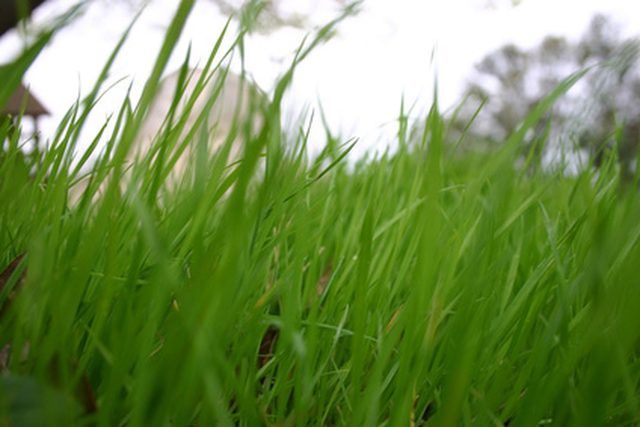Bulbs
Flower Basics
Flower Beds & Specialty Gardens
Flower Garden
Garden Furniture
Garden Gnomes
Garden Seeds
Garden Sheds
Garden Statues
Garden Tools & Supplies
Gardening Basics
Green & Organic
Groundcovers & Vines
Growing Annuals
Growing Basil
Growing Beans
Growing Berries
Growing Blueberries
Growing Cactus
Growing Corn
Growing Cotton
Growing Edibles
Growing Flowers
Growing Garlic
Growing Grapes
Growing Grass
Growing Herbs
Growing Jasmine
Growing Mint
Growing Mushrooms
Orchids
Growing Peanuts
Growing Perennials
Growing Plants
Growing Rosemary
Growing Roses
Growing Strawberries
Growing Sunflowers
Growing Thyme
Growing Tomatoes
Growing Tulips
Growing Vegetables
Herb Basics
Herb Garden
Indoor Growing
Landscaping Basics
Landscaping Patios
Landscaping Plants
Landscaping Shrubs
Landscaping Trees
Landscaping Walks & Pathways
Lawn Basics
Lawn Maintenance
Lawn Mowers
Lawn Ornaments
Lawn Planting
Lawn Tools
Outdoor Growing
Overall Landscape Planning
Pests, Weeds & Problems
Plant Basics
Rock Garden
Rose Garden
Shrubs
Soil
Specialty Gardens
Trees
Vegetable Garden
Yard Maintenance
How to Treat White Grubs in Texas
How to Treat White Grubs in Texas. White grubs are the larvae of beetles, such as the June beetle or southern masked chafer. The adults emerge from the soil in the spring to mate and lay eggs. The eggs hatch in about two weeks and the small white grubs feed on grass roots. In Texas, most damage from the white grub occurs from mid-summer to early...

White grubs are the larvae of beetles, such as the June beetle or southern masked chafer. The adults emerge from the soil in the spring to mate and lay eggs. The eggs hatch in about two weeks and the small white grubs feed on grass roots. In Texas, most damage from the white grub occurs from mid-summer to early fall. The white grubs are white with three pairs of legs and, as they feed in colonies, can destroy the root systems of your lawn. If you have uneven patches of dying lawn, you could have a white grub infestation.
Things You'll Need
Water hose with spray attachment
Sprinklers
Aerating sandals or turning fork.
Pesticide
Nematodes
Hose-end or hand-held sprayer
Chemical Treatment
Remove a section of the affected lawn 3 to 4 inches across and 4 inches deep and inspect for white grubs to confirm infestation. This should be done about five weeks after the beetle flights, usually from mid-June to July, depending on your area of Texas.
Water your grass well the day before you plan to treat your lawn. This will improve the insecticide's effectiveness. This also causes the grubs to move toward the surface of the soil and within easier reach of the insecticide.
Aerate your grass to break up thatch, the accumulated dead grass roots and leaves that lie between the soil surface and the grass.
Apply an insecticide such as chlorpyrifos or imidacloprid, ingredients found in Dursban and Merit brand insecticide. Mix according to package instructions.
Water the lawn well, making sure it receives at least 1/2 inch of water. This will assure the insecticide reaches the roots of your grass. Apply the water slowly to avoid runoff.
Non-Chemical Treatment
Remove a section of the affected lawn 3 to 4 inches across and 4 inches deep and inspect for white grubs to confirm infestation. This should be done about five weeks after the beetle flights. In Texas, this will occur in mid-June to July.
Purchase nematodes, microscopic worms that feed on Texas turf-infesting white grubs. Nematodes can be purchased at local garden stores or garden supply catalogs.
Aerate your lawn to break up thatch, the accumulated dead grass roots and leaves that lie between the soil surface and the grass. A well aerated lawn can reduce grub populations by half.
Water your lawn well, especially if the ground is dry, the day before your plan to treat your lawn.
Apply nematodes per package instructions with either a hand-held sprayer or one that fits on the end of your garden hose. Water well to assure the nematodes reach the grass roots.
Tips & Warnings
The Texas A&M website has a map of Texas displaying the best time to treat white grubs by region.
Nematodes will not eradicate the white grub problem but can reduce the population by up to 50 percent.
Wear a mask if you are sensitive to pesticides or chemicals.